A brand-new release as of this writing, the TCL 20 Pro 5G is the latest in TCL’s 20 line of smartphones and is packed with features, including a quad-rear camera and a Snapdragon 7225 750G chipset. Here’s how it performed in our exacting Display protocol tests.
Key display specifications:
- 6.67-inch curved AMOLED screen
- Resolution: 1080 x 2400 pixels (~394 ppi)
- Aspect ratio: 20:9
- Refresh rate: 60 Hz
About DXOMARK Display tests: For scoring and analysis in our smartphone and other display reviews, DXOMARK engineers perform a variety of objective and perceptual tests under controlled lab and real-life conditions. This article highlights the most important results of our testing. Note that we evaluate display attributes using only the device’s built-in display hardware and its still image (gallery) and video apps at their default settings. (For in-depth information about how we evaluate smartphone and other displays, check out our articles, “How DXOMARK tests display quality” and “A closer look at DXOMARK Display testing.”)
Test summary
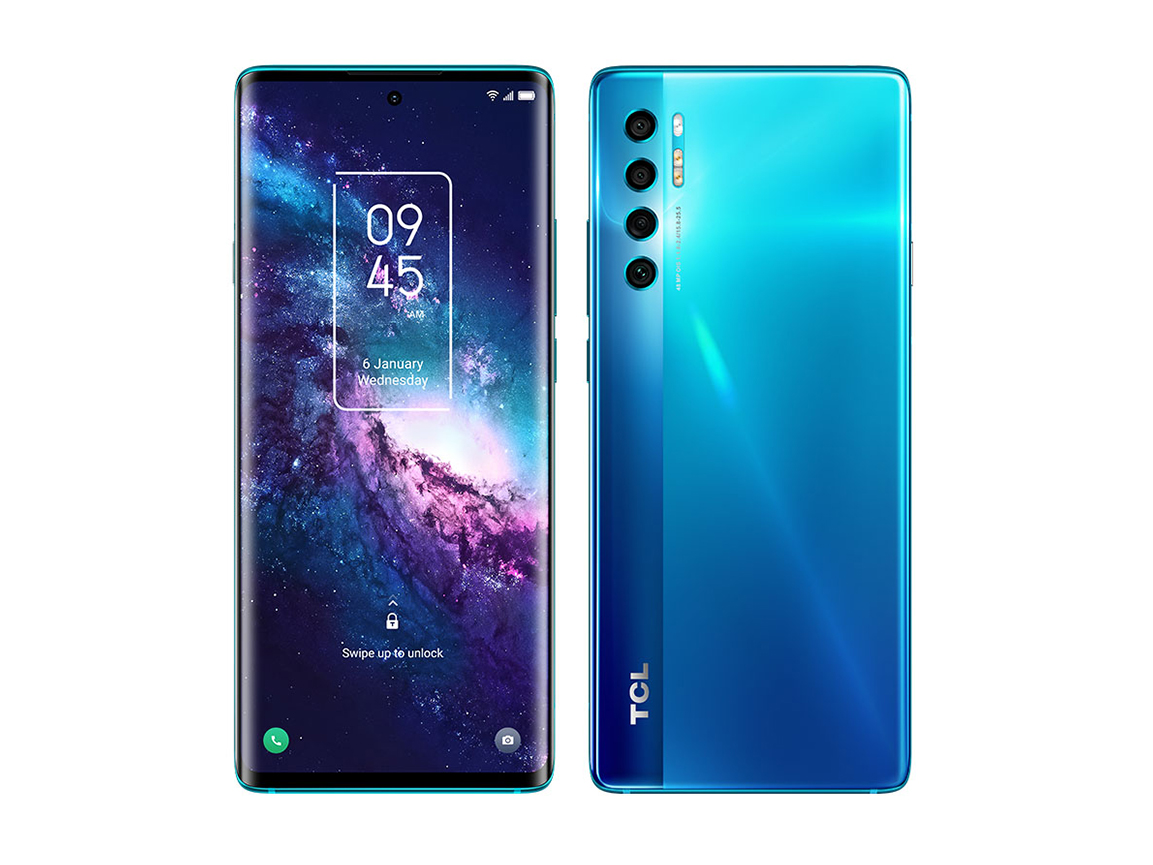 TCL 20 Pro 5G
TCL 20 Pro 5G


The TCL 20 Pro 5G’s overall score of 89 places it close to the top in our current Display rankings and is indicative of significantly improved performance for color, motion, and touch over its direct predecessor, the TCL 10 Pro, which came in at 83 overall when we tested it in fall 2020. (That said, the 20 Pro 5G did not do as well as the 10 Pro in our readability and video categories.) Let’s take a closer look at some specifics.
Analyses and comparisons
The DXOMARK Display overall score of 89 for the TCL 20 Pro 5G is derived from its scores across six attributes: readability, color, video, motion, touch, and artifacts. In this section, we’ll take a closer look at these display quality sub-scores and explain what they mean for the user, and we will compare the TCL 20 Pro 5G’s performance in several areas against its predecessor TCL 10 Pro, and two of its key flagship competitors, the OnePlus 8 Pro and the Vivo X51 5G.

Readability
TCL 20 Pro 5G
67
76
DXOMARK uses the device’s gallery app to show static (still image) content when measuring the device’s display for brightness, contrast, gamma, and blue light impact, etc.
Although the TCL 20 Pro 5G scored several points lower than its predecessor, the TCL 10 Pro (which remains in first place for this category, joined at the top recently by the Exynos version of the Samsung Galaxy S21 Ultra 5G), its brightness levels nevertheless provide good readability in nearly all lighting conditions, with the exception of direct sunlight. It has particularly good luminance indoors; and while it could be a bit brighter outdoors in shade, it remains readable.
Another strong point is that with or without the blue light filter (BLF) on, the 20 Pro 5G’s default brightness in dark conditions make it more than suitable for night reading:
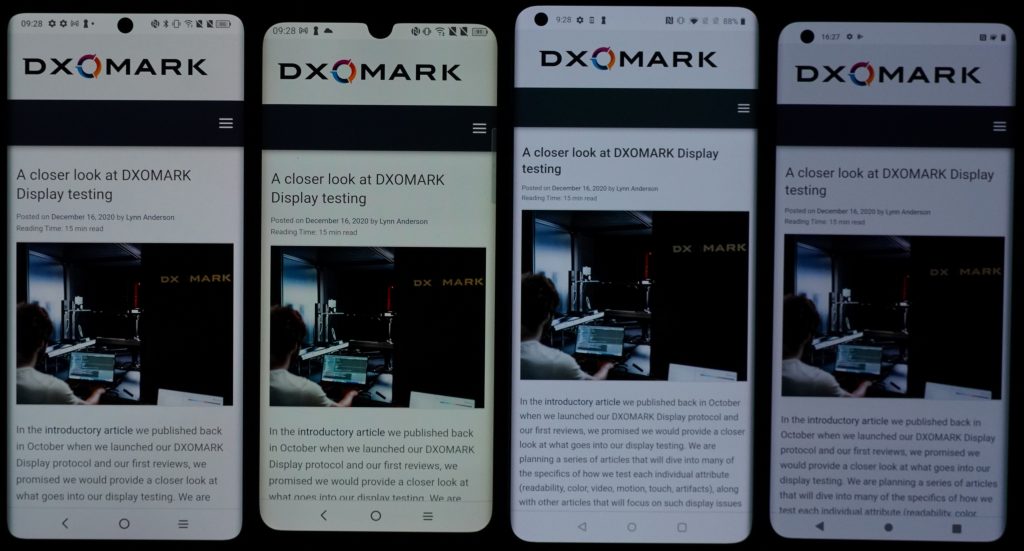
The comparison charts below show the TCL 20 Pro 5G’s performance vs the competition at 0 lux (nighttime) and at 30,000 lux (broad daylight):
As the following photos illustrate, the OnePlus 8 Pro and the TCL 10 Pro are more readable outdoors than the TCL 20 Pro 5G:

As mentioned above, one of the TCL 20 Pro 5G’s weak points is its readability under direct sunlight (a situation in which all smartphones struggle a bit). Though the broad contours and contrasts are more easily seen in the TCL 20 Pro 5G image under full sun in the illustration below, a closer look reveals that the device’s compensatory “sunlight display” feature comes at the cost of lost contrast nuances, which contribute to the model’s face having a flatter appearance overall.

Outdoors under sunlight, from left to right: TCL 20 Pro 5G, TCL 10 Pro, OnePlus 8 Pro, Vivo X51 5G
As the array below illustrates, however, the 20 Pro 5G’s readability indoors is excellent, though just slightly not as good as its outstanding older sibling’s:

Indoors, from left to right: TCL 20 Pro 5G, TCL 10 Pro, OnePlus 8 Pro, Vivo X51 5G
When held at an angle, the TCL 20 Pro 5G performs very similarly to its predecessor, with both TCL devices not quite as bright as either the OnePlus and Vivo competitors, as shown in our chart of objective test results:
Our perceptual tests for brightness vs angle confirm the objective test results, as you can see the illustrative photo array below. But while the TCL devices are a bit darker than the others, they nonetheless are still quite readable at a 45° angle:

Indoor brightness at 45°, from left to right: TCL 20 Pro 5G, TCL 10 Pro, OnePlus 8 Pro, Vivo X51 5G
The newest TCL’s time when reacting to rising light levels is too slow. Further, transitions need to be smoother both when light levels rise and when they fall; far from seamlessly moving from one brightness level to another, the 20 Pro has noticeable steps.
Another issue for which the TCL 20 Pro 5G falls down a bit is its lack of brightness uniformity: as you can see in the illustration below, it is brighter on the top of the screen and on the bottom right area. The bottom of the display is noticeably darker overall as well.
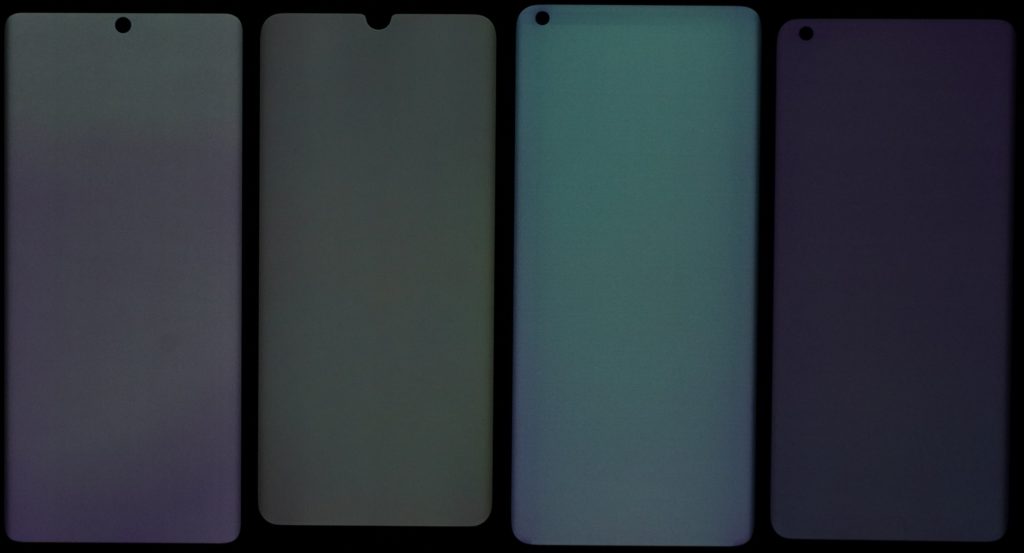
Brightness uniformity, from left to right: TCL 20 Pro 5G, TCL 10 Pro, OnePlus 8 Pro, Vivo X51 5G

Color
TCL 20 Pro 5G
89
92
DXOMARK uses the device’s gallery app to show static (still image) content when measuring the device’s display for white point, gamut, uniformity, color fidelity, and blue light filter impact, etc.
Color is where the TCL 20 Pro 5G truly shines, besting the former category leader (the OnePlus 8 Pro) by one point. Unlike many phones, it adapts its color gamut to the content, thereby improving its color accuracy. Its color rendering is particularly good indoors, although a slight green cast is sometimes visible on skin tones.
Its color rendering remains good outdoors in shade. In the illustrative photo array below, while less bright-looking than both the TCL 10 Pro and the OnePlus 8 Pro images, the 20 Pro 5G image is actually a much closer match to the color saturation level of the test reference image.

Color in outdoor shade, from left to right: TCL 20 Pro 5G, TCL 10 Pro, OnePlus 8 Pro, Vivo X51 5G
Under sunlight, however, the 20 Pro 5G’s “sunlight display” feature alters the color rendering, which contributes to the loss of color nuances:

Color under sunlight, from left to right: TCL 20 Pro 5G, TCL 10 Pro, OnePlus 8 Pro, Vivo X51 5G
As for color fidelity, the charts below show the measured color faithfulness of the TCL 20 Pro 5G compared to the target under 1000 lux lighting in both the sRGB (standard) color space (left) and the broader DCI-P3 color space (right). The center of each circle is the target color; anything outside the circle represents a noticeable color difference. The further the tip of the arrow is outside of the circle, the more a user will notice the difference between the color on the display and color of the real object or chart next to it. As you can see, the TCL 20 Pro 5G shows remarkably good fidelity in both color spaces.


White (color) vs angle
Holding a smartphone at an angle can affect display color rendering. The left-hand chart below shows the TCL 20 Pro 5G’s color tendencies when held at an angle; in the right-hand chart (a closeup of the chart on the left), each dot represents a measurement taken at a discrete angle and distance from the device; dots inside the inner circle exhibit no color shift in angle; those between the inner and outer circle have shifts that are just noticeable by trained experts; but those falling outside the outer circle are noticeable. You can see that as the TCL 20 Pro 5G tilts, it first heads into blue territory before shifting toward green as the angle becomes more acute.
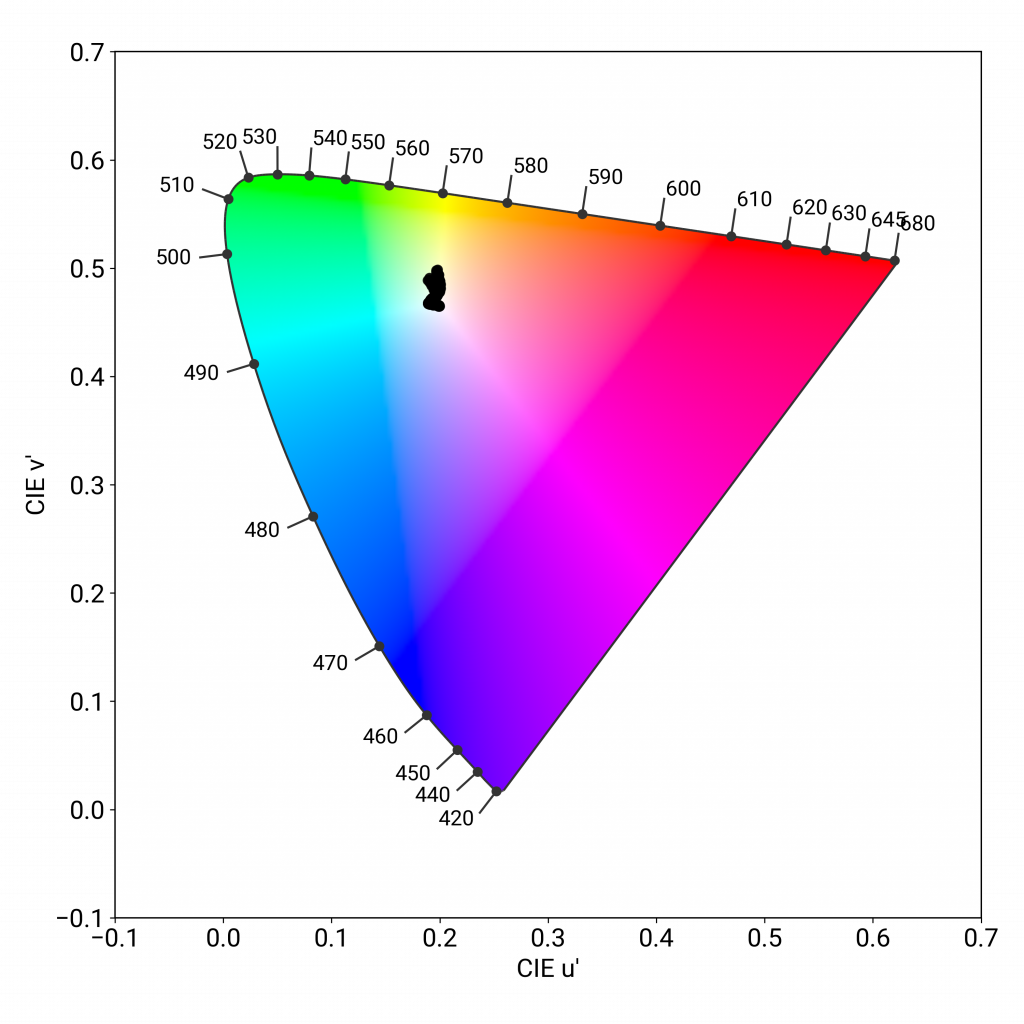
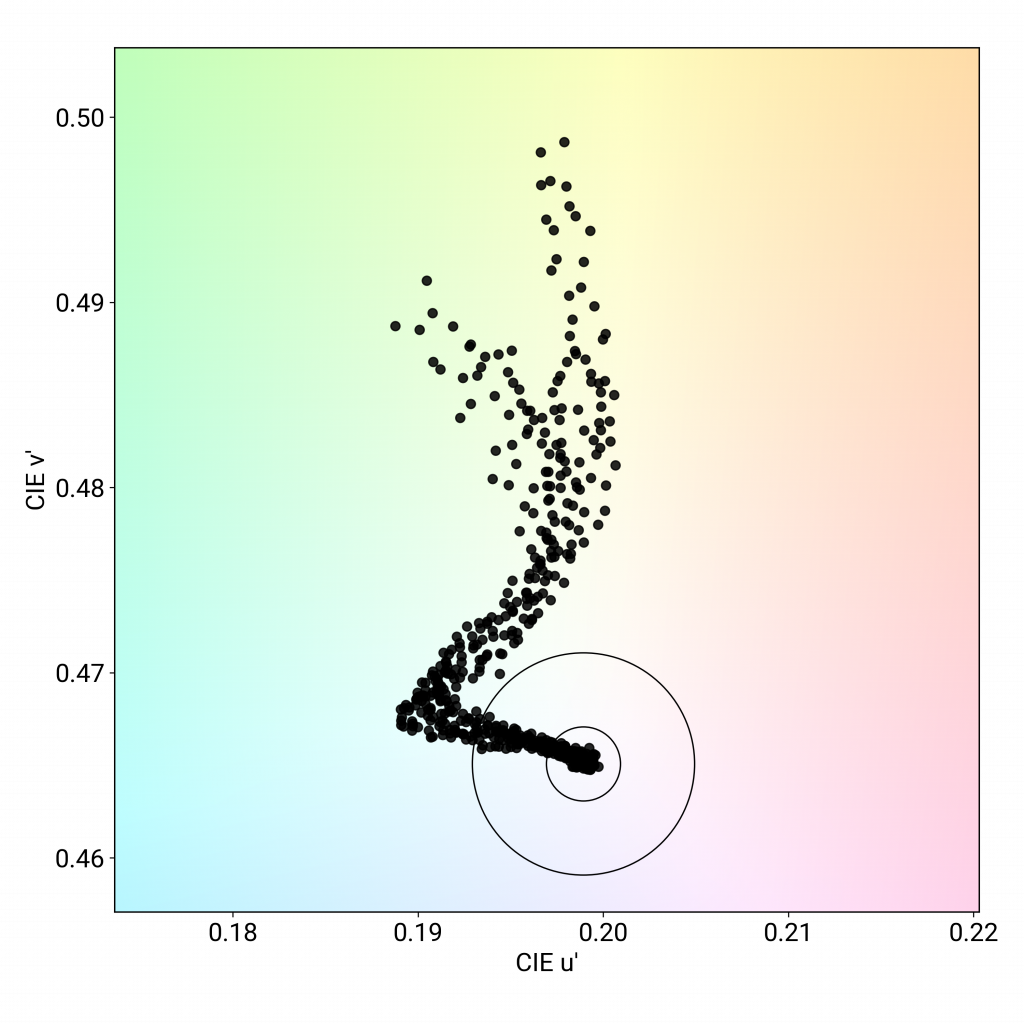
The photos below of our perceptual tests back up the objective measurements. The array below shows shots on axis (that is, perpendicular to the viewer). Of particular note is the difference between the renderings of the two TCL devices: the sky older TCL 10 Pro is rendered as cyan, while the TCL 20 Pro 5G’s color is much more natural-looking.

Indoor color on axis, from left to right: TCL 20 Pro 5G, TCL 10 Pro, OnePlus 8 Pro, Vivo X51 5G
Viewed at an angle, TCL 20 Pro 5G shifts towards blue and then to green as the angle increases; while better than the TCL 10 Pro, such a shift is nonetheless detrimental to skin tone rendering.

Indoor color at 45°, from left to right: TCL 20 Pro 5G, TCL 10 Pro, OnePlus 8 Pro, Vivo X51 5G
In addition to the lack of brightness uniformity mentioned previously, the TCL 20 Pro 5G’s screen also shows marked color non-uniformity, with greenish areas matching the too-bright areas, and purplish areas corresponding to darker areas on the display, as shown below:

Color uniformity, from left to right: TCL 20 Pro 5G, TCL 10 Pro, OnePlus 8 Pro, Vivo X51 5G
With the blue light filter (BLF) on, the device shows a strong orange cast; however, the cast does not impair readability; further, the TCL 20 Pro 5G’s filter achieves a 52% attenuation of blue light, which indicates that TCL has made an interesting and effective tradeoff.

Color shift with BLF on, from left to right: TCL 20 Pro 5G, TCL 10 Pro, OnePlus 8 Pro, Vivo X51 5G

Video
TCL 20 Pro 5G
74
91
DXOMARK uses the device’s video (or browser) app to show dynamic content when measuring the device’s display for brightness, contrast, gamma, and color.
As the TCL 10 Pro was the long-time leader for video at 89 points (again beaten only recently by the Exynos version of the Samsung Galaxy S21 Ultra 5G), it comes as both a surprise and a disappointment that the TCL 20 Pro 5G not only falls behind its sibling, but falls a full 15 points behind. Just like the TCL 10 Pro, the 20 Pro 5G cannot play UHD 60 fps content, but a more unwelcome surprise explains the low score: the TCL 20 Pro 5G’s video color rendering is way off the pace. While its luminance level is well adapted to HDR10 content viewed in dark lighting conditions, as shown in the photo below, the device’s white balance tends to show pinkish casts, and skin tones (dark skin tones in particular) take on a reddish hue (also shown below).
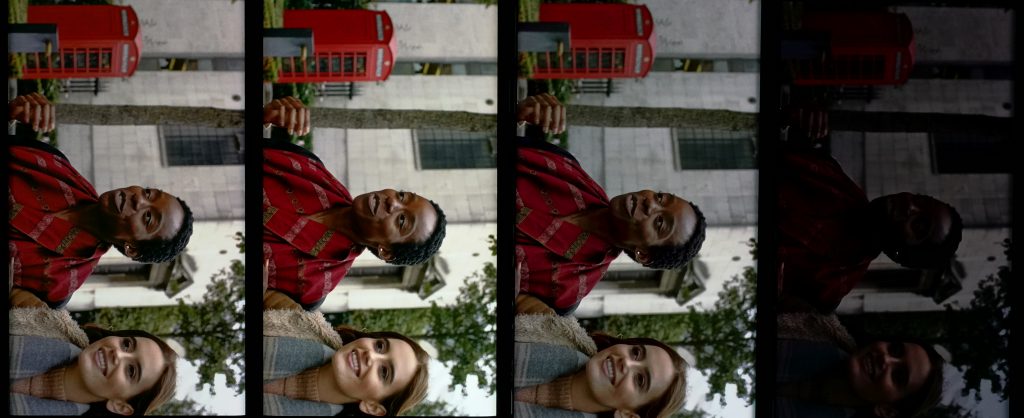
Video brightness, from left to right: TCL 20 Pro 5G, TCL 10 Pro, OnePlus 8 Pro, Vivo X51 5G
Furthermore, midtone rendering is over-contrasted, as is particularly visible on dark skin tones; arguably worse, however, is that dark tones show a pronounced greenish hue which strongly impacts the overall color rendering:

Video contrast, from left to right: TCL 20 Pro 5G, TCL 10 Pro, OnePlus 8 Pro, Vivo X51 5G

Motion
TCL 20 Pro 5G
81
87

Touch
TCL 20 Pro 5G
75
85
The TCL 20 Pro 5G puts in a satisfactory performance for motion, showing frame drops or stutters only rarely (note the very clean screen in the left-hand image below); further, our testers saw no frame drops when playing video games. While again we note that the device does not handle UHD 60 fps content (so we could not test its performance for those parameters and scored it accordingly), the device plays other video content instantly and with no artifacts.
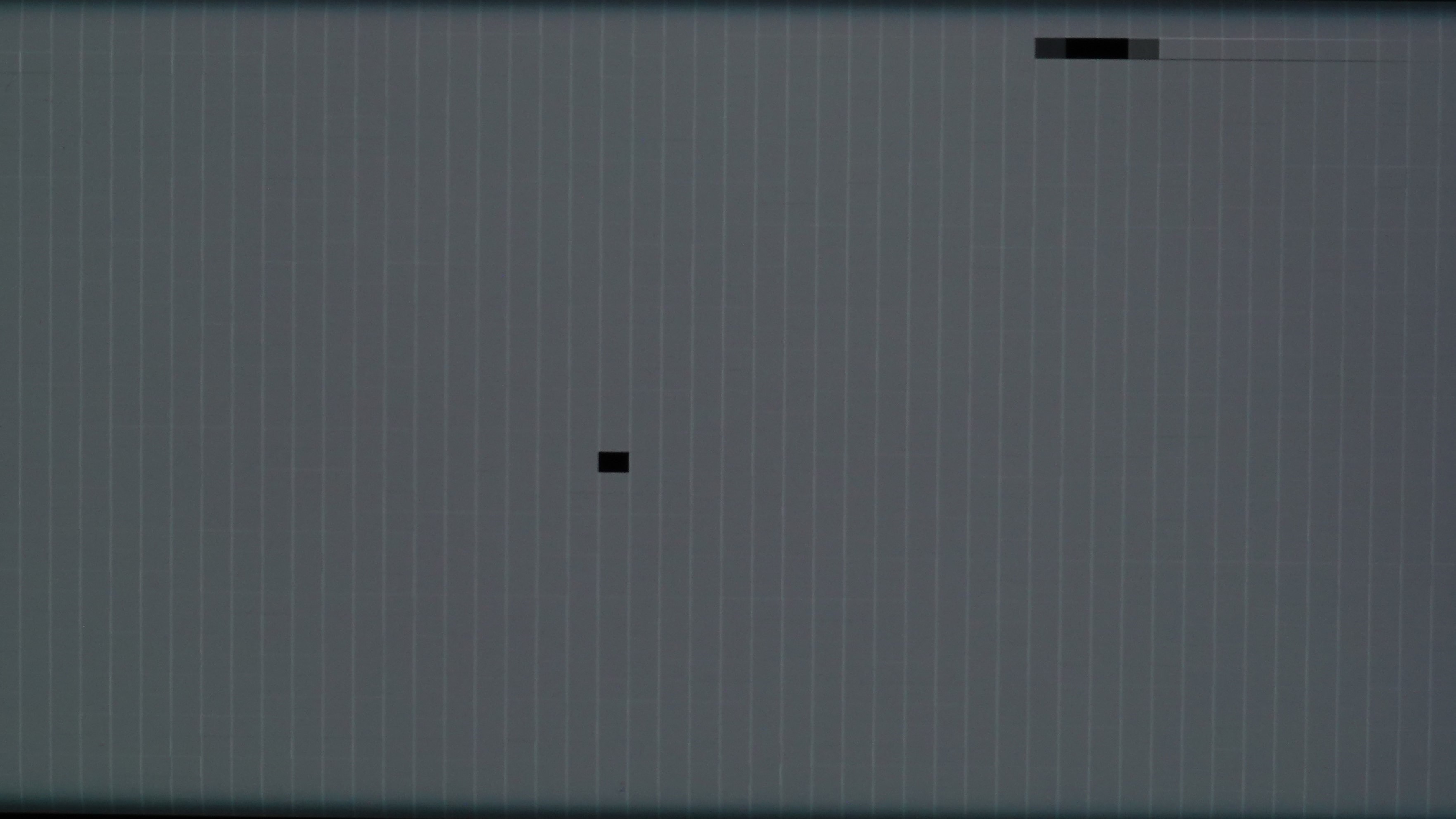
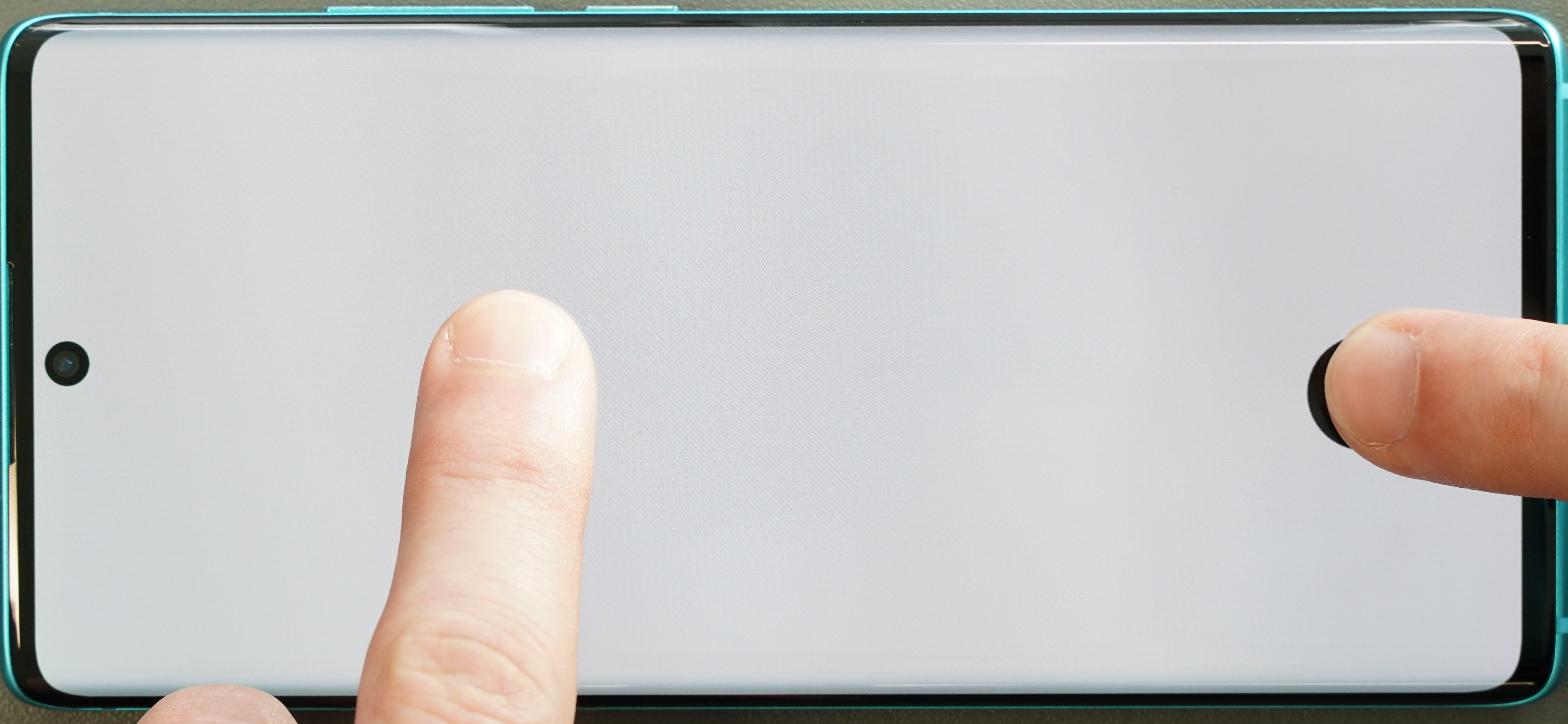
As for touch, while the OnePlus 8 Pro is first in this category with 83, the TCL 20 Pro 5G ties for second place with the Asus ROG Phone 3, thanks in part to good touch accuracy in the gallery app (as illustrated above right). Again, there are no visible frame drops when playing video games, and while the device could be a bit smoother overall, it is much more accurate and reactive than the TCL 10 Pro, which earned a bottom-half score of 60 when tested.
Also unlike the TCL 10 Pro, the 20 Pro 5G’s display screen has a wider selection space that extends all the way out to the edges. This makes for a very comfortable touch experience overall, with one caveat: gamers in particular need to be careful, as this greater reactivity and larger selection space can lead to problems with ghost touch artifacts.

Artifacts
TCL 20 Pro 5G
81
86
The TCL 20 Pro 5G controls artifacts reasonably well, coming in just three points behind the category leader (the OnePlus 8 Pro at 84 points), and beating the older 10 Pro by one point, in part because the 20 Pro 5G’s control of judder is flawless. But as with the TCL 10 Pro, three relatively small issues persist in the newer model: first of all, flicker, which can be noticeable in low light:
Second, ghost touches occur frequently when gaming, whether in landscape or portrait orientation. As noted in the touch section above, the device’s touch reactivity makes for an overall pleasant experience, but again, gamers in particular will need to be careful.
Finally, strong aliasing is visible and affects the gaming experience. The very visible stair-step appearance along rounded contours is reminiscent of much older video games.
Conclusion
The TCL 20 Pro 5G puts in a superlative performance for still image (gallery app) color rendering, besting the previous leader by a point. While it has a few drawbacks, it has decent readability, accurate and reactive touch, and good control of motion and artifacts. Based on its display performance, the latest TCL device appears to be a good value for the money.
Pros
- Color fidelity is accurate under nearly all conditions.
- Very accurate touch allows users to select small on-screen elements.
- Device adapts well to most luminance levels, with particularly good readability indoors.
- Almost no frame drops and excellent playback reactivity.
Cons
- The device does not read UHD 60 FPS video content.
- Inaccurate color rendering of HDR10 videos, specially for dark tones.
- Not bright enough under direct sunlight, with some alteration of content appearance.
- Noticeable steps when adapting to both rising and falling light levels.


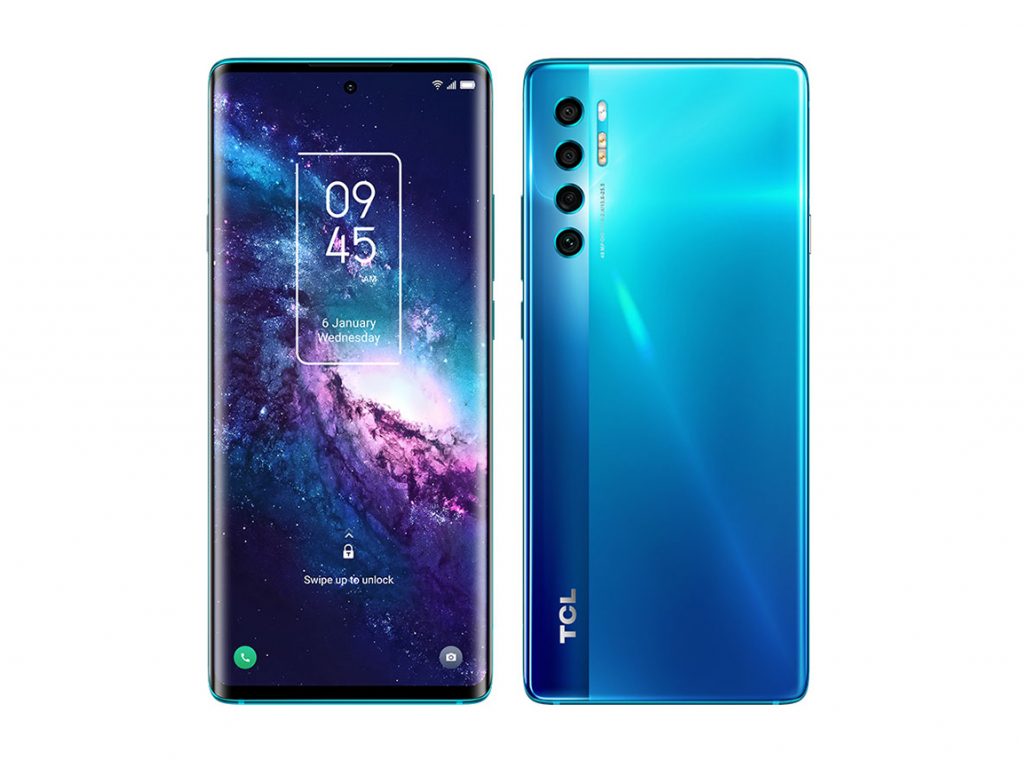

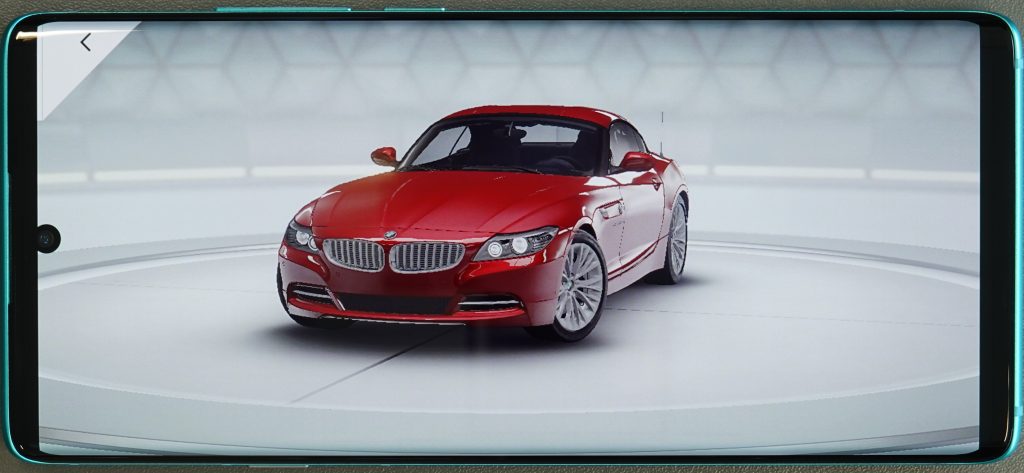


DXOMARK encourages its readers to share comments on the articles. To read or post comments, Disqus cookies are required. Change your Cookies Preferences and read more about our Comment Policy.